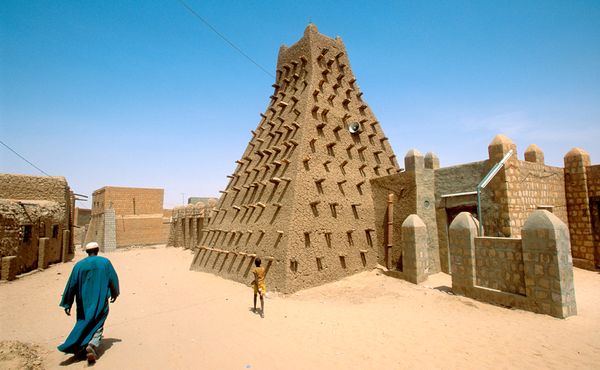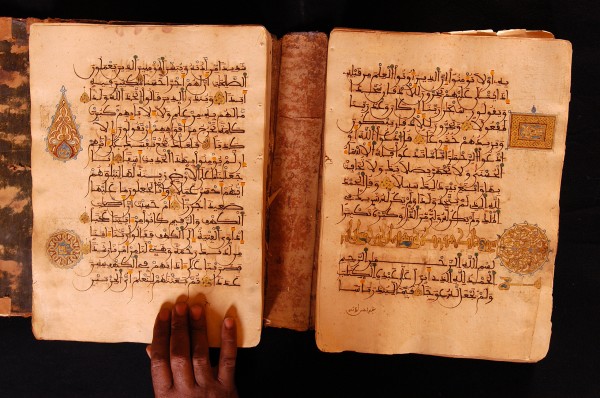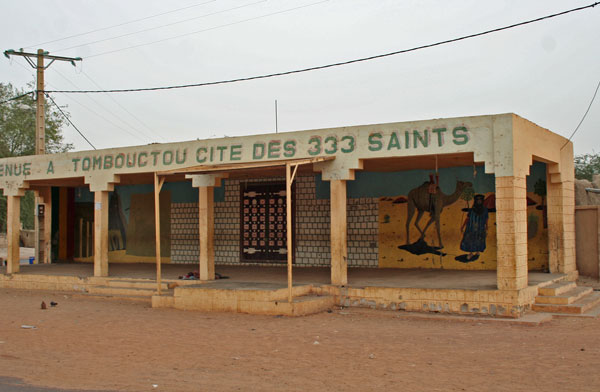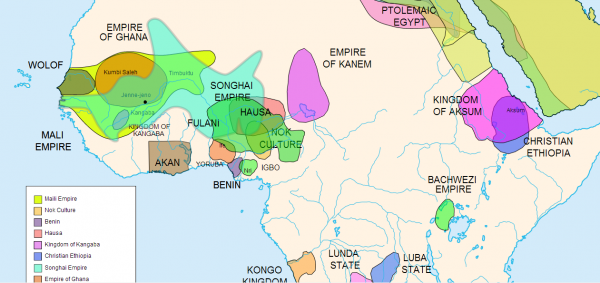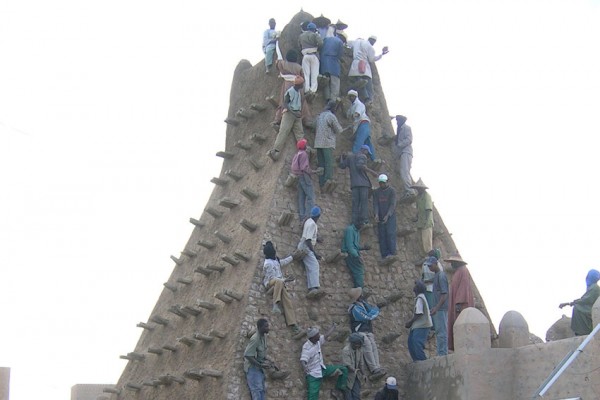September 4, 2014
8 Facts That Show
Timbuktu Is
One of the
Most Fascinating
Cities in History
Posted by A Moore
Timbuktu is a city in the West African nation of Mali situated 20 kilometers (12 miles) north of the River Niger on the southern edge of the Sahara Desert. The rapid economic growth in the 13th and 14th centuries due to trade in salt, gold, ivory and other things, positioned the legendary city as one of the greatest academic and commercial centers in the world. The city’s golden age in the 15th and 16th centuries proved fertile ground for scholarship of religions, arts, math and sciences for its 100,000 inhabitants and the world.
Because of the difficulty of excavating through meters of sand that have buried the remains over the past centuries, there was no consensus on the origins of Timbuktu. However, a recent archaeological survey, between 2008 and 2010, by Yale academics confirmed that Timbuktu’s antiquity extends back further than its 12th century A.D. Tuareg origins, and permanent large-scale urban settlements began as early as 200 B.C. The researchers also concluded that Timbuktu was already part of trans-Saharan trade by 500 A.D.
Largest University in the World
Under the Songhai empire, the city became a great Muslim educational center, with more than 180 Quranic schools and universities. By the end of Mansa Musa’s reign (early 14th century A.D.), the Sankoré mosque, also known as the University of Sankoré, was one of the first universities ever built in the world. A contemporary of Oxford and the Sorbonne, the level of learning at Timbuktu’s Sankoré University was superior to that of all other Islamic centers in the world. The three madrasahs — Djinguereber, Sidi Yahya and Sankore — facilitated 25,000 students, making it also the largest university in the world at the time.
Considered one of the leading beacons of Islamic knowledge, Timbuktu drew many scholars from around the world. An active trade in books between Timbuktu and other parts of the Islamic world led to the writing of thousands of manuscripts. During the cities golden age, books became the most valuable commodity above all other trade goods. Timbuktu housed more than 700,000 manuscripts, forming a priceless written record of African history. About 20,000 manuscripts are preserved by the Ahmed Baba Institute, built in 2009 to protect the fragile literary artifacts. Many of the books also reside in some of the local families’ private libraries. Among the families with manuscript collections, it’s traditional for one family member from each generation to swear publicly that he will protect the library for as long as he lives. The families revere their manuscripts, even honoring them once a year through a holiday called Maouloud, on which imams and family elders perform a reading from the ancient prayer books to mark the birth of the Prophet Muhammad. Before and during the occupation of the city by Islamic militants, more than 300,000 Timbuktu manuscripts from the Ahmed Baba Institute and from private libraries were saved and moved to more secure locations in Mali.
The ‘City of 333 Saints’
Timbuktu is also known as the “City of 333 Saints” because 333 saints were laid to rest in the city. These were celebrated Muslim scholars and teachers who were revered for their exceptional wisdom, scholarship and generosity. Many Muslim pilgrims traveled to Timbuktu to honor these religious icons.
Who Ruled?
Timbuktu was under the control of several different rulers throughout its 900-year history. It was annexed by the Mali Empire early in the 14th century. In the first half of the 15th century, the Tuaregs took control of the city for a short period until the expanding Songhai Empire absorbed the city in 1468. A Moroccan army defeated the Songhai in 1591, and made Timbuktu, rather than Gao, the capital. The invaders established a new ruling class, the Arma, who after 1612 became virtually independent of Morocco. Different tribes governed until the French took over in 1893, a situation that lasted until it became part of the current Republic of Mali in 1960.
Tales of Timbuktu’s fabulous wealth are one of the reasons metal-hungry Europeans came searching the west coast of Africa for riches. Among the most famous descriptions of Timbuktu are those of the Spanish explorer Leo Africanus and the captured African merchant Shabeni, although the more truthful aspects of Africanus’ descriptions were largely ignored.
Well before the Europeans arrived, Timbuktu had declined economically. When European travelers didn’t find the gold they were looking for and instead found how difficult it was to get there, the city’s reputation shifted from being fabled because of its gold to being fabled because of its location and mystery. Being used in this sense since at least 1863, English dictionaries now cite Timbuktu as a metaphor for any faraway place.
Recognized as a
World Heritage Site
In December 1988, the World Heritage Committee (WHC) selected parts of Timbuktu’s historic center for inscription on its World Heritage list. Three mosques and 16 mausoleums or cemeteries were selected for World Heritage status.
With inclusion came the call for protection of the buildings’ conditions, an exclusion of new construction works near the sites and measures against the encroaching sand.
Shortly afterwards, the monuments were placed on the List of World Heritage in Danger by the Malian government, which lasted from 1990 until 2005, when restoration work, compilation of an inventory and other measures warranted “its removal from the Danger List.”
In 2008, the WHC placed the protected area under increased scrutiny, dubbed “reinforced monitoring,” to access the impact of planned construction work. The designation was removed a year later after concerns were addressed.
Following the takeover of Timbuktu by Tuareg militants MNLA and the Islamist group Ansar Dine and the destruction of some of the city’s monuments and tombs, the site was returned to the List of World Heritage in Danger in 2012.
>via: http://atlantablackstar.com/2014/09/04/8-facts-show-timbuktu-one-fascinating-cities-history/4/




